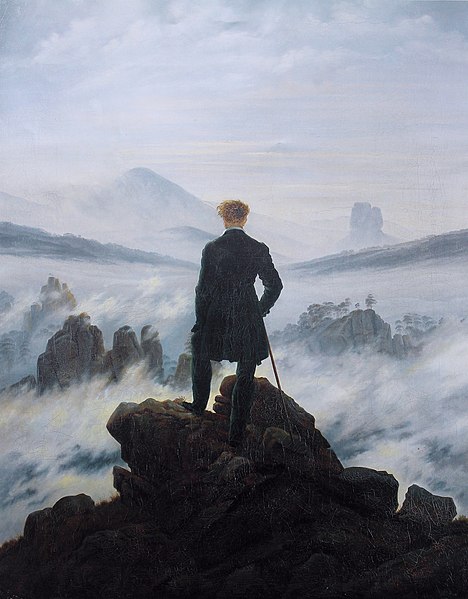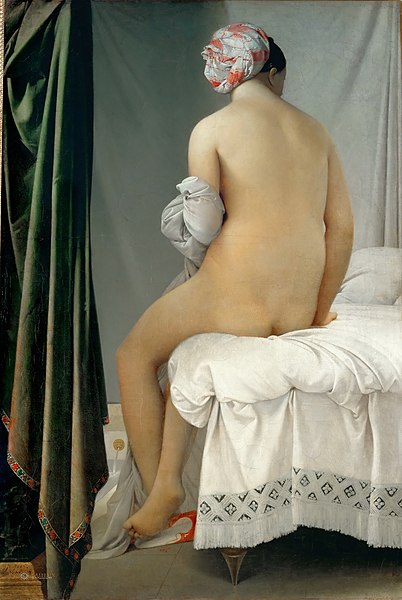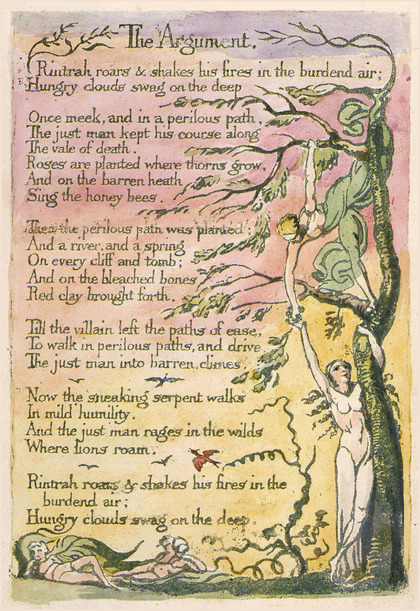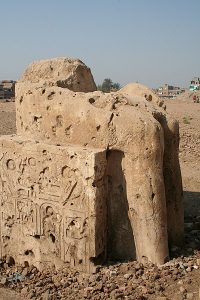3.1 AN INTRODUCTION TO ROMANTICISM AND ROMANTIC POETRY



As is usually the case, the dates and times and specific characteristics of the period we call Romanticism are all figments of our imagination. We may assign the dates of 1750-1850 and place it somewhere between the frivolity of the Rococo and the realism of the late 19th century. During this time people continued to reject the wanton lavishness of the aristocracy. It was a time of uneasiness with the status quo and a striving for change. It was a time when people strove for the simple, the natural, the earnest. It was also a shift from reason to feeling. It was a time of heroic emotion as revolution swept continents, changing ideas and people forever. People sought for human rights, human freedom, and equality.
A list of descriptive terms for this period might include: sensibility, restlessness, heroism, self-sacrifice, uneasiness, impatience, sincerity, and sublimity. It was an age of radical change from which our modern world emerged. Think of these events and the ideas that evolved from them:
- The population was exploding: Expansion
- People demanded democratic governments: Revolution
- Authority was continually challenged. The great debate of the century was what, or who, should be believed: Discontent
- Europeans colonized the globe: Imperialism, which also increased nationalism, and patriotism
- Improvements in transportation and communication: quick exchange of ideas and dissemination of information, propaganda and opinion
- A new sense of history and our place in it: progress and everything modern was good, while everything old was replaceable and expendable. Not everyone agreed with this idea. Some sought to hold on to the past and preserve it for the future. Many feared the loss of traditional values, institutions, and customs.
It is obvious that there is much happening during this time. There are many ways to divide this period into palatable segments. One reason this period is too difficult to categorize is because it deals with broad, general ideas rather than specific characteristics. The first use of the term Romantic was derived from the word romance, and referred to the romance languages. It was used by 19th century German writers to discuss contemporary literature written in the vernacular language, as opposed to writings in the traditional, scholarly, Latin writings.
Painters, writers, and musicians in the 19th century shared a number of similar concerns, which can be divided into four categories:
- Emphasis on personal feelings and their expression
- Emphasis on emotion rather than intellect. This led to the expression of subjective rather than objective visions. The romantics used the arts to explore and dissect their own personal hopes and fears rather than to arrive at some general truth.
- Subjective means proceeding from or taking place within the mind such as to be unaffected by the external world. Something that exists in the mind.
- Objective is something that has actual existence, having to do with a material object as distinguished from a mental concept.
- The identity of reality is rooted in the self, not in the external, man-made world
- This produced the third attitude of romanticism: its love of the fantastic and the exotic. Often artists looked deep into their own dreams or nightmares to find release from everyday constraints and problems. Some artists imagined remote and exotic lands and dreamed of life in the mysterious orient.
- Mystical attachment to the world of nature. 19th century artists emphasized the wild unpredictability of nature and depicted nature as a mirror of his own emotions.
These shared ideas led to two very different attitudes about the artist and his place in society. Some artists retreated into their own world or imagination, alienating themselves from society and fostering the idea that the artist walks to the beat of a different drummer. On the other hand many artists incorporated local ideas, local emotions, and local folklore into their art, creating new stirrings of nationalism and a new sense of belonging. These artists were at the forefront of social and political movements.

So what was the role of the artist in society? They found a new, as yet untapped taste of a large public audience. This created an uncertain and risky market for their work. The public wanted to acquire wealth and property. They were influenced by the opinions of critics writing in the newspapers and music magazines. Competition forced many artists, because of their personal desire for success, to please public opinion and to flatter the critics. Some artists took chances, hoping to please the public. Some artists, dissatisfied with the changing public taste, protested, and did things their own way. Artists took sides, whether it was to please public taste or to reject it and do their own thing.
The traditional art of the past was caught in the middle of this tug-of-war. The Classical art of Greece and Rome and the art of the Renaissance, which was acknowledged to be great, were rebelled against. Artists challenged and responded, challenged, and responded, so that during this time art changed from the traditional to the modern. This caused the creation of multiple styles that are very difficult to categorize. It also makes it difficult to categorize some artists who fit into multiple genres.

At the same time new products became available to artists that caused them to reevaluate their medium. The camera, and the mass produced prints that were available because of it, made art available to the masses. The artist was replaced, just as the manuscript illuminator had been replaced by the printer in the 16th century. The function of the artist was different and he or she had to learn new ways to create and deliver art.
ROMANTIC POETRY
William Wordsworth (1770-1850) was born into the upper middle to upper class. When he was orphaned in 1778, he was cared for by his aunt and uncle. His formal education ended with a short term at St. John’s College, Cambridge. But from his early childhood, nature was his teacher; human nature was his subject. In 1791, Wordsworth traveled to France to learn the French language, with an eye to making a living as a tutor in French. He became caught up in the French Revolution and had an affair with Annette Vallon, who bore him a daughter, Caroline, in 1792. His personal relationship with Annette Vallon turned just as the revolution did, in that Annette was a monarchist. Pro-revolutionary as he was, Wordsworth became afraid for his life, and as he could not make a living in France, he returned to England, effectively abandoning Annette Vallon and their daughter. The Reign of Terror made it impossible for him to return to them until 1802, at which time he reached an agreement with Annette before marrying Mary Hutchinson. An inheritance made him financially independent, and he set up house in his beloved Lake District with his wife, his sister Dorothy, and his growing family. This contentment was earned at great emotional price, though.
After leaving France and Annette Vallon, Wordsworth suffered a sort of nervous or emotional breakdown. The crisis of that time—and indeed for the rest of his life—was his desire to recover his original self, to let “the child be father to the man” (“My Heart Leaps Up”). In his poetry, Wordsworth tried to understand the human mind, especially during intense moments or states of excitement. All humans, regardless of class, experience emotions; and Wordsworth believed that in states of excitement, humans reach a level of dignity, power, and authenticity that is poetic. The language of his poetry was that which was really used by men. Wordsworth adds the coloring of the imagination which makes common things uncommon, and makes natural things seem supernatural. He thereby highlights the power of the imagination—that all humans possess and share equally.6 One of Wordsworth’s most well known poems is known as “Daffodils”:
I Wandered Lonely as a Cloud
I wandered lonely as a cloud
William Blake (1757-1827)
William Blake was a committed Christian and much of his poetry and art was based on or related to the Bible. However, he was hostile to organized religion. Blake was not popular during his lifetime and was thought of as mentally unstable by many of his contemporaries. He was apprenticed to an engraver as a young child and spent much of his time engraving copies of Greek antiquities and Renaissance masters such as Raphael and Michelangelo. He studied for a time in the Royal Academy, watched the revolution unfold in France, and felt its impact in London. His work, The Marriage of Heaven and Hell was written and etched between 1790 and 1793. It satirizes the brutality and authority of the church, saying that ancient civilizations had purer religious practices that were later overtaken and destroyed by elite classes of priests. The Marriage of Heaven and Hell depicts Blake’s view of the spiritual world, from the point of view of the devil. Some of his basic questions are these: Can you trust what the devil says? Read the verses below and see if you can see why it is a satire on religion and mortality. Is heaven always good and hell always bad? Do we need both heaven and hell in our lives? (Rintrah may represent revolutionary wrath)

You can see why this work was so controversial and why Blake was not well received in his lifetime. People did not know what to think of his work, and it was difficult to understand. It was not an easy read and was very complicated.
Elizabeth Barrett Browning (1806-1861)

Elizabeth Barrett Browning was born in England in 1806, the oldest of twelve children. The family owned slaves and sugar plantations in Jamaica, and when the slave trade began to be outlawed, their family fortune became smaller and smaller. Elizabeth had a serious lung disease and was injured riding a horse when she was fifteen, causing many years of pain and a reliance on pain killers. She was very active in her church and like many Victorian women, lived under the tyrannical rule of her father, who did not want any of his children to live an independent life. She and Robert Browning exchanged more than 500 letters, and in 1846 she eloped with him to Florence, Italy. “In 1857 Browning published her verse novel Aurora Leigh, which portrays male domination of a woman. In her poetry she also addressed the oppression of the Italians by the Austrians, the child labor mines and mills of England, and slavery, among other social injustices. Although this decreased her popularity, Elizabeth was heard and recognized around Europe.”9
Her Sonnets of the Portuguese were written about Robert, before they were married, and are considered her best Romantic works. She was worried that he, who was several years younger than her and in good health, would be giving up too much to marry her. After they had been married for several years, she showed them to her husband and he insisted that they be published. This sonnet is very popular today and is often read at weddings. What makes it part of the “romantic” movement of the 19th century?
Sonnets From the Portuguese, Sonnet 43
How do I love thee? Let me count the ways.
I love thee to the depth and breadth and height
My soul can reach, when feeling out of sight
For the ends of being and ideal grace.
I love thee to the level of every day’s
Most quiet need, by sun and candle-light.
I love thee freely, as men strive for right.
I love thee purely, as they turn from praise.
I love thee with the passion put to use
In my old griefs, and with my childhood’s faith.
I love thee with a love I seemed to lose
With my lost saints. I love thee with the breath,
Smiles, tears, of all my life; and, if God choose,
I shall but love thee better after death.
Percy Bysshe Shelley (1792-1822)
“Romanticism’s major themes—restlessness and brooding, rebellion against authority, interchange with nature, the power of the visionary imagination and of poetry, the pursuit of ideal love, and the untamed spirit ever in search of freedom—all of these Shelley exemplified in the way he lived his life and live on in the substantial body of work that he left the world after his legendary death by drowning at age 29.”10 Ozymandias was written in the winter of 1817 when Shelley and his wife (Mary Shelley, the author of Frankenstein), were discussing Napoleon’s conquest of Egypt and the archeological activities occurring there. Their discussion focused on the now lost empire of the pharaohs of Egypt that had melted away in the desert. This poem gives Shelley’s thoughts about Egypt and the pharaoh Ramses II.
Ozymandias
I met a traveler from an antique land,
Who said—“Two vast and trunkless legs of stone
Stand in the desert. Near them, on the sand,
Half sunk a shattered visage lies, whose frown,
And wrinkled lip, and sneer of cold command,
Tell that its sculptor well those passions read
Which yet survive, stamped on these lifeless things,
The hand that mocked them, and the heart that fed;
And on the pedestal, these words appear:
My name is Ozymandias, King of Kings;
Look on my Works, ye Mighty, and despair!
Nothing beside remains. Round the decay
Of that colossal Wreck, boundless and bare
The lone and level sands stretch far away.11

So a concluding thought might be this: Romanticism stressed strong emotion as a source of experience, placing emphasis on such emotions as trepidation, horror, and the awe experienced in confronting the sublimity of nature. Romanticism arose as a reaction against the excessive rationalism of the Enlightenment. While the world was being rewritten by various revolutions across the political spheres, romanticism worked to look back at a time when Knights and Kings ruled their subjects with a firm but gentle hand. Romantic authors often found themselves sympathizing with the people who were leading the rebellions against the monarchs because the basic tenets of human happiness were based in nature. The rejection of aristocratic social and political norms led to schools of writers across various countries each of whom would develop their own style of Romantic writing. The flaw in the Enlightenment mind was its disregard of the faculty of emotion which is so central to human life. Romanticism was the inevitable reaction to Enlightenment Rationalism. The artistic and literary works of the Romantic Movement have lasting appeal, because the human emotion runs stronger and deeper than the intellect or the will.13

